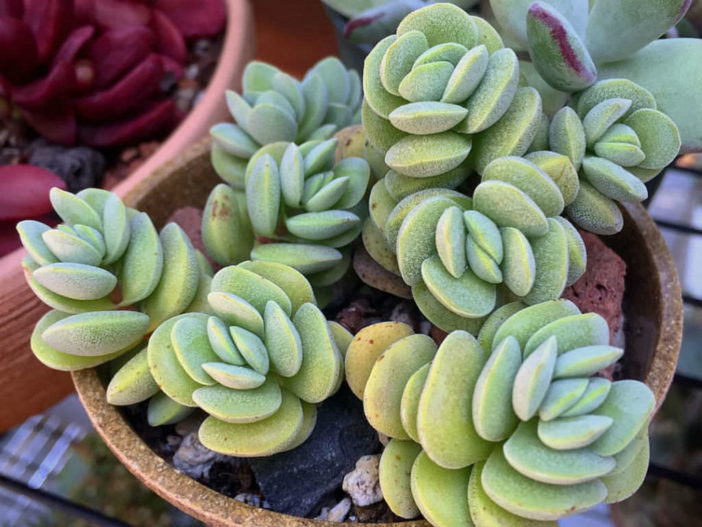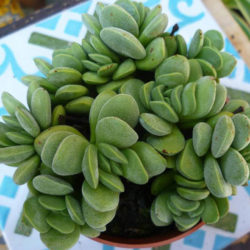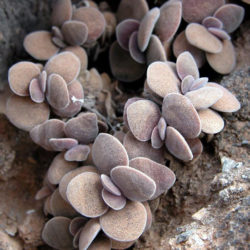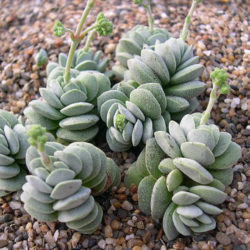Scientific Name
Crassula sericea var. velutina (Friedr.) Toelken
Synonym(s)
Crassula velutina
Scientific Classification
Family: Crassulaceae
Subfamily: Crassuloideae
Genus: Crassula
Description
Crassula sericea var. velutina is a small, sparingly branched succulent with short, decumbent to erect branches with internodes not visible between leaves. This variety is smaller and less branched than Crassula sericea var. sericea and usually has decumbent stems instead of erect. It can grow up to 6 inches (15 cm) tall (including inflorescence). The branches are up to 2.6 inches (6.5 cm) long and bear 8 to 10 pairs of fleshy, green to gray leaves densely covered with fine erect hairs. The leaves are flattened, obovate to broadly ovate, and measure up to 1.2 inches (3 cm) long, up to 0.8 inches (2 cm) wide, and up to 0.2 inches (0.5 cm) thick.
During spring, small, white, tubular flowers appear arranged in erect thyrses that reach up to 4 inches (10 cm) in height.
Origin
Crassula sericea var. velutina is native to southwestern Namibia and South Africa (Northern Cape). It grows in rock crevices on quartzite outcrops, mainly in the south or southwestern aspect.

Hardiness
USDA hardiness zone 10b to 11b: from 35 °F (+1.7 °C) to 50 °F (+10 °C).
How to Grow and Care
Crassulas are easy to grow but susceptible to mealy bugs and fungal diseases. Overwatering is sure to be fatal, as with all succulents, so err on the side of too dry rather than too wet. Never let your Crassula sit in water. If you water from beneath by letting the plant sit in a saucer of water, ensure to pour off any excess water after a few minutes.
Crassulas are generally started by division, offsets, or leaf cuttings. Plants can be easily propagated from a single leaf: sprout leaves by placing them into a succulent or cacti mix, then covering the dish until they sprout.
Repot as needed, preferably during the warm season. To repot a succulent, ensure the soil is dry before repotting, then gently remove the pot. Knock away the old soil from the roots, removing any rotted or dead roots. Treat any cuts with a fungicide. Place the plant in its new pot and backfill it with potting soil, spreading the roots as you repot. Leave the plant dry for a week or so, then begin to water lightly to reduce the risk of root rot.
See more at How to Grow and Care for Crassula.
Links
- Back to genus Crassula
- Succupedia: Browse succulents by Scientific Name, Common Name, Genus, Family, USDA Hardiness Zone, Origin, or cacti by Genus
Photo Gallery
Click on a photo to see a larger version.


